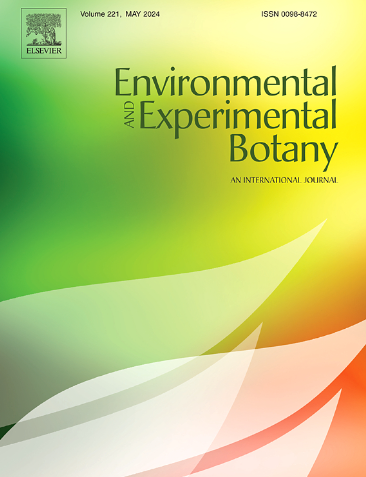Root nodule presence alters the dynamics of photosynthate translocation under varying soil moisture conditions
IF 4.7
2区 生物学
Q2 ENVIRONMENTAL SCIENCES
引用次数: 0
Abstract
This study investigated the dynamics of 11C-labeled photosynthate translocation in nodulated and non-nodulated soybean plants across three time windows: during the low water condition, and at 0–3 h and 4–7 h after the recover water content. Advanced imaging techniques, including positron emission tomography (PET) and X-ray computed tomography (X-ray CT), enabled three-dimensional visualization of root structures and carbon allocation patterns. Under low water condition, nodulated soybeans prioritized carbon translocation to taproots and nodules. Using logistic modeling of ¹¹C accumulation, Vmax (steepest slope; maximum translocation rate) and Kmax (asymptote; accumulation capacity) were calculated. In nodulated plants, Vmax at lateral root tips increased by 56 % during 0–3 h after rewatering relative to the low-water condition; during 4–7 h, Vmax and Kmax at middle-layer nodules increased by 55 % and 49 %, respectively. Collectively, these results indicate a temporal reorganization of sink activity after rewatering—from lateral root tips early to middle-layer nodules later. These observations are consistent with a role for nodules as prominent sinks that may facilitate the redistribution of photosynthates after rewatering, whereas non-nodulated plants showed decreases in Vmax and Kmax across root regions under low-water conditions and exhibited little recovery during 0–3 and 4–7 h after rewatering. These patterns are consistent with a role for nodules in facilitating the reactivation and redistribution of carbon sinks under changing water availability. This study clarifies how water status modulates belowground carbon allocation in soybean and provides a basis for evaluating nodule-associated sink behavior under fluctuating moisture. These insights may inform crop management and guide breeding strategies aimed at improving resilience to water variability.
根瘤的存在改变了不同土壤水分条件下光合作用转运的动态
本研究研究了11c标记的光合产物在结瘤和非结瘤大豆植株3个时间窗口内的转运动态:低水分条件下、水分恢复后0-3 h和4-7 h。先进的成像技术,包括正电子发射断层扫描(PET)和x射线计算机断层扫描(x射线CT),使根结构和碳分配模式的三维可视化成为可能。低水分条件下,结瘤大豆的碳优先向主根和根瘤转运。采用¹¹C积累的logistic模型,计算Vmax(最陡斜率;最大转运率)和Kmax(渐近线;积累量)。在结瘤植物中,复水后0 ~ 3 h,侧根尖Vmax较低水条件增加了56 %;4 ~ 7 h,中层结节的Vmax和Kmax分别增加了55 %和49 %。总的来说,这些结果表明复水后汇活性的时间重组-从早期的侧根尖到后来的中间层根瘤。这些观察结果与根瘤作为重要的汇的作用是一致的,它可以促进复水后光合产物的再分配,而非根瘤植物在低水条件下根系的Vmax和Kmax减少,并且在复水后0-3和4-7 h内几乎没有恢复。这些模式与结核在水可用性变化下促进碳汇再激活和再分配的作用是一致的。本研究阐明了水分状态对大豆地下碳分配的调节作用,为评价水分波动条件下大豆根瘤相关汇行为提供了依据。这些见解可以为作物管理提供信息,并指导旨在提高对水分变化的适应能力的育种策略。
本文章由计算机程序翻译,如有差异,请以英文原文为准。
求助全文
约1分钟内获得全文
求助全文
来源期刊

Environmental and Experimental Botany
环境科学-环境科学
CiteScore
9.30
自引率
5.30%
发文量
342
审稿时长
26 days
期刊介绍:
Environmental and Experimental Botany (EEB) publishes research papers on the physical, chemical, biological, molecular mechanisms and processes involved in the responses of plants to their environment.
In addition to research papers, the journal includes review articles. Submission is in agreement with the Editors-in-Chief.
The Journal also publishes special issues which are built by invited guest editors and are related to the main themes of EEB.
The areas covered by the Journal include:
(1) Responses of plants to heavy metals and pollutants
(2) Plant/water interactions (salinity, drought, flooding)
(3) Responses of plants to radiations ranging from UV-B to infrared
(4) Plant/atmosphere relations (ozone, CO2 , temperature)
(5) Global change impacts on plant ecophysiology
(6) Biotic interactions involving environmental factors.
 求助内容:
求助内容: 应助结果提醒方式:
应助结果提醒方式:


